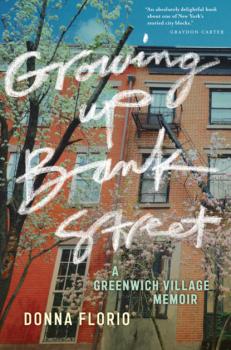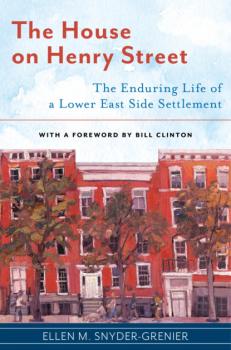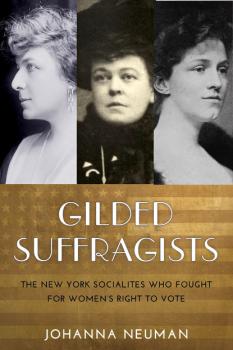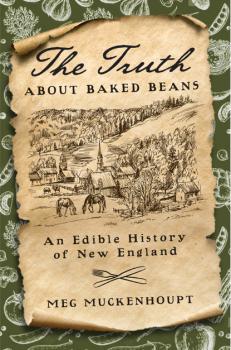ТОП просматриваемых книг сайта:
Washington Mews Books
Скачать книги из серии Washington Mews BooksАннотация
A delightful romp through America’s Golden Age of Cocktails The decades following the American Civil War burst with invention—they saw the dawn of the telephone, the motor car, electric lights, the airplane—but no innovation was more welcome than the beverage heralded as the “cocktail.” The Gilded Age, as it came to be known, was the Golden Age of Cocktails, giving birth to the classic Manhattan and martini that can be ordered at any bar to this day. Scores of whiskey drinks, cooled with ice chips or cubes that chimed against the glass, proved doubly pleasing when mixed, shaken, or stirred with special flavorings, juices, and fruits. The dazzling new drinks flourished coast to coast at sporting events, luncheons, and balls, on ocean liners and yachts, in barrooms, summer resorts, hotels, railroad train club cars, and private homes.From New York to San Francisco, celebrity bartenders rose to fame, inventing drinks for exclusive universities and exotic locales. Bartenders poured their liquid secrets for dancing girls and such industry tycoons as the newspaper mogul William Randolph Hearst and the railroad king “Commodore” Cornelius Vanderbilt.Cecelia Tichi offers a tour of the cocktail hours of the Gilded Age, in which industry, innovation, and progress all take a break to enjoy the signature beverage of the age. Gilded Age Cocktails reveals the fascinating history behind each drink as well as bartenders’ formerly secret recipes. Though the Gilded Age cocktail went “underground” during the Prohibition era, it launched the first of many generations whose palates thrilled to a panoply of artistically mixed drinks.
Аннотация
A vivid memoir of life in one of New York City’s most dynamic neighborhoods Growing Up Bank Street is an evocative, tender account of life in Greenwich Village, on a unique street that offered warmth, support, and inspiration to an adventurous and openhearted young girl. Bank Street, a short strip of elegant brownstones and humble tenements in Greenwich Village, can trace its lineage back to the yellow fever epidemics of colonial New York. In the middle of the last century, it became home to a cast of extraordinary characters whose stories intertwine in this spirited narrative. Growing up, Donna Florio had flamboyant, opera performer parents and even more free-spirited neighbors. As a child, she lived among beatniks, artists, rock musicians, social visionaries, movie stars, and gritty blue-collar workers, who imparted to her their irrepressibly eccentric life rules. The real-life Auntie Mame taught her that she is a divine flame from the universe. John Lennon, who lived down the street, was gracious when she dumped water on his head. Sex Pistols star Sid Vicious lived in the apartment next door, and his heroin overdose death came as a wake-up call during her wild twenties. An elderly Broadway dancer led by brave example as Donna helped him comfort dying Villagers in the terrifying early days of AIDS, and a reclusive writer gave her a path back from the brink when, as a witness to the attacks of 9/11, her world collapsed. These vibrant vignettes weave together a colorful coming of age tale against the backdrop of a historic, iconoclastic street whose residents have been at the heart of the American story. As Greenwich Village gentrifies and the hallmarks of its colorful past disappear, Growing Up Bank Street gives the reader a captivating glimpse of the thriving culture that once filled its storied streets.
Информация о книге
Автор произведения Donna Florio
Жанр Биографии и Мемуары
Серия Washington Mews Books
Аннотация
Chronicles the sweeping history of the storied Henry Street Settlement and its enduring vision of a more just society On a cold March day in 1893, 26-year-old nurse Lillian Wald rushed through the poverty-stricken streets of New York’s Lower East Side to a squalid bedroom where a young mother lay dying—abandoned by her doctor because she could not pay his fee. The misery in the room and the walk to reach it inspired Wald to establish Henry Street Settlement, which would become one of the most influential social welfare organizations in American history.Through personal narratives, vivid images, and previously untold stories, Ellen M. Snyder-Grenier chronicles Henry Street’s sweeping history from 1893 to today. From the fights for public health and immigrants’ rights that fueled its founding, to advocating for relief during the Great Depression, all the way to tackling homelessness and AIDS in the 1980s, and into today—Henry Street has been a champion for social justice. Its powerful narrative illuminates larger stories about poverty, and who is “worthy” of help; immigration and migration, and who is welcomed; human rights, and whose voice is heard.For over 125 years, Henry Street Settlement has survived in a changing city and nation because of its ability to change with the times; because of the ingenuity of its guiding principle—that by bridging divides of class, culture, and race we could create a more equitable world; and because of the persistence of poverty, racism, and income disparity that it has pledged to confront. This makes the story of Henry Street as relevant today as it was more than a century ago. The House on Henry Street is not just about the challenges of overcoming hardship, but about the best possibilities of urban life and the hope and ambition it takes to achieve them.
Аннотация
A compelling set of short stories from the author of World War I classic, All Quiet on the Western Front [b][/b]German-American novelist Erich Maria Remarque captured the emotional anguish of a generation in his World War I masterpiece, All Quiet on the Western Front, as well as in an impressive selection of novels, plays, and short stories. This exquisite collection revives Remarque’s unforgettable voice, presenting a series of short stories that have long ago faded from public memory. From the haunting description of an abandoned battlefield to the pain of losing a loved one in the war to soldiers’ struggles with what we now recognize as PTSD, the stories offer an unflinching glimpse into the physical, emotional, and even spiritual implications of World War I. In this collection, we follow the trials of naïve war widow Annette Stoll, reflect on the power of small acts of kindness toward a dying soldier, and join Johann Bartok, a weary prisoner of war, in his struggle to reunite with his wife. Although a century has passed since the end of the Great War, Remarque’s writing offers a timeless reflection on the many costs of war. Eight Stories offers a beautiful tribute to the pain that war inflicts on soldiers and civilians alike, and resurrects the work of a master author whose legacy – like the war itself – will endure for generations to come. A compelling set of short stories from the author of World War I classic, All Quiet on the Western Front [b][/b]German-American novelist Erich Maria Remarque captured the emotional anguish of a generation in his World War I masterpiece, All Quiet on the Western Front, as well as in an impressive selection of novels, plays, and short stories. This exquisite collection revives Remarque’s unforgettable voice, presenting a series of short stories that have long ago faded from public memory. From the haunting description of an abandoned battlefield to the pain of losing a loved one in the war to soldiers’ struggles with what we now recognize as PTSD, the stories offer an unflinching glimpse into the physical, emotional, and even spiritual implications of World War I. In this collection, we follow the trials of naïve war widow Annette Stoll, reflect on the power of small acts of kindness toward a dying soldier, and join Johann Bartok, a weary prisoner of war, in his struggle to reunite with his wife. Although a century has passed since the end of the Great War, Remarque’s writing offers a timeless reflection on the many costs of war. Eight Stories offers a beautiful tribute to the pain that war inflicts on soldiers and civilians alike, and resurrects the work of a master author whose legacy – like the war itself – will endure for generations to come.
Аннотация
New York City’s elite women who turned a feminist cause into a fashionable revolution In the early twentieth century over two hundred of New York's most glamorous socialites joined the suffrage movement. Their names—Astor, Belmont, Rockefeller, Tiffany, Vanderbilt, Whitney and the like—carried enormous public value. These women were the media darlings of their day because of the extravagance of their costume balls and the opulence of the French couture clothes, and they leveraged their social celebrity for political power, turning women's right to vote into a fashionable cause.Although they were dismissed by critics as bored socialites “trying on suffrage as they might the latest couture designs from Paris,” these gilded suffragists were at the epicenter of the great reforms known collectively as the Progressive Era. From championing education for women, to pursuing careers, and advocating for the end of marriage, these women were engaged with the swirl of change that swept through the streets of New York City. Johanna Neuman restores these women to their rightful place in the story of women’s suffrage. Understanding the need for popular approval for any social change, these socialites used their wealth, power, social connections and style to excite mainstream interest and to diffuse resistance to the cause. In the end, as Neuman says, when change was in the air, these women helped push women’s suffrage over the finish line.
Аннотация
An extraordinarily visceral collection of posters that represent the progressive protest movements of the twentieth Century. Two of the most recognizable images of twentieth-century art are Pablo Picasso’s “Guernica” and the rather modest mass-produced poster by an unassuming illustrator, Lorraine Schneider “War is Not Healthy for Children and Other Living Things.” From Picasso’s masterpiece to a humble piece of poster art, artists have used their talents to express dissent and to protest against injustice and immorality. As the face of many political movements, posters are essential for fueling recruitment, spreading propaganda, and sustaining morale. Disseminated by governments, political parties, labor unions and other organizations, political posters transcend time and span the entire spectrum of political affiliations and philosophies. Drawing on the celebrated collection in the Tamiment Library’s Poster and Broadside Collection at New York University, Ralph Young has compiled an extraordinarily visceral collection of posters that represent the progressive protest movements of the twentieth Century: labor, civil rights, the Vietnam War, LGBT rights, feminism and other minority rights. Make Art Not War can be enjoyed on aesthetic grounds alone, and also offers fascinating and revealing insights into twentieth century cultural, social and political history.
Информация о книге
Автор произведения Группа авторов
Жанр Изобразительное искусство, фотография
Серия Washington Mews Books
Аннотация
A richly illustrated romp with America’s Gilded Age leisure class—and those angling to join it Mark Twain called it the Gilded Age. Between 1870 and 1900, the United States’ population doubled, accompanied by an unparalleled industrial expansion, and an explosion of wealth unlike any the world had ever seen. America was the foremost nation of the world, and New York City was its beating heart. There, the richest and most influential—Thomas Edison, J. P. Morgan, Edith Wharton, the Vanderbilts, Andrew Carnegie, and more—became icons, whose comings and goings were breathlessly reported in the papers of Joseph Pulitzer and William Randolph Hearst. It was a time of abundance, but also bitter rivalries, in work and play. The Old Money titans found themselves besieged by a vanguard of New Money interlopers eager to gain entrée into their world of formal balls, debutante parties, opera boxes, sailing regattas, and summer gatherings at Newport. Into this morass of money and desire stepped Caroline Astor. Mrs. Astor, an Old Money heiress of the first order, became convinced that she was uniquely qualified to uphold the manners and mores of Gilded Age America. Wherever she went, Mrs. Astor made her judgments, dictating proper behavior and demeanor, men’s and women’s codes of dress, acceptable patterns of speech and movements of the body, and what and when to eat and drink. The ladies and gentlemen of high society took note. “What would Mrs. Astor do?” became the question every social climber sought to answer. And an invitation to her annual ball was a golden ticket into the ranks of New York’s upper crust. This work serves as a guide to manners as well as an insight to Mrs. Astor’s personal diary and address book, showing everything from the perfect table setting to the array of outfits the elite wore at the time. Channeling the queen of the Gilded Age herself, Cecelia Tichi paints a portrait of New York’s social elite, from the schools to which they sent their children, to their lavish mansions and even their reactions to the political and personal scandals of the day. Ceceilia Tichi invites us on a beautifully illustrated tour of the Gilded Age, transporting readers to New York at its most fashionable. A colorful tapestry of fun facts and true tales, What Would Mrs. Astor Do? presents a vivid portrait of this remarkable time of social metamorphosis, starring Caroline Astor, the ultimate gatekeeper.
Аннотация
Forages through New England’s most famous foods for the truth behind the region’s culinary myths Meg Muckenhoupt begins with a simple question: When did Bostonians start making Boston Baked Beans? Storekeepers in Faneuil Hall and Duck Tour guides may tell you that the Pilgrims learned a recipe for beans with maple syrup and bear fat from Native Americans, but in fact, the recipe for Boston Baked Beans is the result of a conscious effort in the late nineteenth century to create New England foods. New England foods were selected and resourcefully reinvented from fanciful stories about what English colonists cooked prior to the American revolution—while pointedly ignoring the foods cooked by contemporary New Englanders, especially the large immigrant populations who were powering industry and taking over farms around the region. The Truth about Baked Beans explores New England’s culinary myths and reality through some of the region’s most famous foods: baked beans, brown bread, clams, cod and lobster, maple syrup, pies, and Yankee pot roast. From 1870 to 1920, the idea of New England food was carefully constructed in magazines, newspapers, and cookbooks, often through fictitious and sometimes bizarre origin stories touted as time-honored American legends. This toothsome volume reveals the effort that went into the creation of these foods, and lets us begin to reclaim the culinary heritage of immigrant New England—the French Canadians, Irish, Italians, Portuguese, Polish, indigenous people, African-Americans, and other New Englanders whose culinary contributions were erased from this version of New England food. Complete with historic and contemporary recipes, The Truth about Baked Beans delves into the surprising history of this curious cuisine, explaining why and how “New England food” actually came to be.








